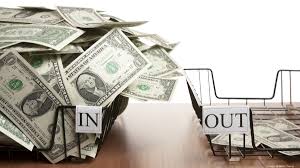Securing capital is a difficult task for any firm. When it comes to money, friends, family, venture capital firms and banks all have their own set of standards, expectations, and skepticism. If you’re in the midst of it, you’ll need to understand several crucial indicators and sticking points, one of which is something called your leverage ratio.
In this section, we’ll go over some of the financial ratios that fall under the broader “leverage ratio” umbrella, examine what a solid one looks like, and look at an example of how to calculate it. Let’s get started.
What are Leverage Ratios?
A leverage ratio is any financial ratio that compares the amount of debt incurred by a company to other accounts on its balance sheet, income statement, or cash flow statement. These ratios show how the company’s assets and business operations are financed (using debt or equity). The diagram below depicts two common leverage ratios: debt/equity and debt/capital.
List of Common Leverage Ratios.
Market analysts, investors, and lenders may take into account a variety of leverage ratios. Total assets, total equity, operating expenses, and incomes are some accounts that are highly comparable to debt.
Here are five of the most prevalent leverage ratios and their formula:
Debt-to-Assets Ratio = Total Debt / Total Assets
Debt-to-Equity Ratio = Total Debt / Total Equity
Debt-to-Capital Ratio = Total Debt / (Total Debt + Total Equity)
Debt-to-EBITDA Ratio (EBITDA) = Total Debt / Earnings Before Interest, Taxes, Depreciation, and Amortization
Asset-to-Equity Ratio = Total Assets / Total Equity
Example on How to Calculate Leverage Ratios
Example of Leverage Ratios #1
Consider the following financial data for a company:
Assets worth $50 million
Debt of $20 million
Equity of $25 million
EBITDA of $5 million per year
Annual depreciation expense of $2 million
Now calculate each of the five above-mentioned leverage ratios in the example as follows:
Debt/Assets = $20/$50 = 0.40x
Debt/Equity = 20/25 = 0.80x
Debt/Capital = 20/(20 + $25) = 0.44x
Debt to EBITDA = $20 / $5 = 4.00x
$50 / $25 = 2.00x asset/equity
Example #2 of a Leverage Ratios
If a company has $100 million in total assets, $45 million in total debt, and $55 million in total equity, the proportionate amount of borrowed money to total assets is 0.45, or less than half of its entire resources. When comparing debt to equity, this firm’s ratio is 0.82, indicating that equity accounts for the bulk of the firm’s assets.
Importance and Application of Leverage Ratios
Leverage ratios measure the extent to which a company uses borrowed funds. It also assesses the solvency and capital structure of the company. High leverage in a company’s capital structure can be hazardous, but it also has advantages.
The use of leverage is advantageous when the firm is making profits because they are amplified. A highly leveraged firm, on the other hand, will struggle if its profitability falls and maybe at a larger risk of default than an unleveraged or less leveraged firm in the same situation.
Finally, examining the current level of debt is a significant element that creditors consider when a corporation applies for further borrowing.
Leverage, in essence, increases risk while also creating a reward if things go smoothly.
What are the Different Types of Leverage Ratios?
#1. Operational Leverage
The proportion or ratio of fixed costs to variable costs is referred to as an operating leverage ratio. A corporation with significant operating leverage has a high proportion of fixed costs in its operations and is a capital-intensive company. Small changes in sales volume would have a big impact on earnings and return on investment. A negative situation for this type of organization would be if its high fixed expenses were not covered by earnings due to a drop in market demand for the product. A vehicle manufacturing company is an example of a capital-intensive industry.
If the fixed cost to sales ratio is large (i.e., greater than 50%), the company has strong operating leverage. If the fixed cost-to-revenue ratio is low (i.e., 20%), the company has minimal operating leverage.
#2. Financial leverage
A financial leverage ratio is the amount of obligation or debt that a firm has used or will use to finance its commercial activities. Borrowed money, rather than stock capital, can significantly improve a company’s return on equity and earnings per share, provided that the rise in earnings exceeds the interest paid on the loans. Excessive borrowing might result in default and bankruptcy. See the list of the most frequent financial leverage ratios above.
#3. Combined Leverage
A combined leverage ratio refers to the combination of applying operating leverage and financial leverage. When looking at the balance sheet and income statement, for example, operating leverage affects the upper half of the income statement through operating income, whereas financial leverage influences the lower half, where earnings per share to stockholders can be calculated.
How is Leverage created?
Leverage is developed in a variety of ways, including:
- A firm incurs debt in order to purchase specific assets. This is known as “asset-backed lending,” and it is highly popular in real estate and fixed asset purchases such as property, plant, and equipment (PP&E).
- When a private equity firm (or another company) engages in a leveraged buyout (LBO).
- A firm borrows money based on its total creditworthiness. This is typically a form of “cash flow loan” and is normally only available to larger businesses.
- When a business borrows money to fund an acquisition (learn more about the mergers and acquisitions process).
- Equity investors chose to borrow money in order to leverage the size of their investment portfolio.
- When a person trades options, futures, margins, or other financial products.
- When a person buys a house and decides to borrow money from a financial institution to cover a portion of the cost. A profit is realized if the property is resold at a greater price.
- A company raises its fixed costs in order to leverage its operations. Fixed costs do not alter the business’s capital structure, but they do enhance operating leverage, which disproportionately increases/decreases earnings relative to revenues.
What are the dangers of High Operating and Financial Leverage?
If leverage multiplies earnings, it also multiplies danger. Having high operating and financial leverage ratios can be extremely harmful to a company. A high operating leverage ratio indicates that a corporation has limited sales but significant costs or margins that must be paid. This may result in either a reduced income objective or insufficient operating income to cover other expenses, resulting in negative results for the company.
High financial leverage ratios, on the other hand, develop when the return on investment (ROI) does not exceed the interest paid on loans. This will have a major negative impact on the company’s profitability and earnings per share
Why should you consider Leverage Ratios?
As investors, you must consider everything. Leverage ratios will show you how a company’s capital has been organized.
Many businesses are hesitant to take out loans from outside sources. They believe that any growth or new initiatives should be funded by equity.
However, in order to benefit from leverage, the capital must be structured with a share of the debt. It aids in lowering the cost of capital (by lowering the cost of equity, it is enormous). Furthermore, it aids in paying less tax because you can only determine taxes after paying the interest (i.e. the cost of debt).
As investors, you must examine firms and calculate the aforementioned leverage ratios. You would learn whether or not the company is able to take advantage of leverage. It is too dangerous to invest in a company that has taken on too much debt. At the same time, if a company has no debt, it may spend too much on the cost of capital and, as a result, limit its profitability in the long run.
However, to calculate leverage ratios alone will not suffice. To gain a clear picture of how a firm is performing, you should examine all financial statements (particularly the four – cash flow statement, income statement, balance sheet, and shareholders’ equity statement) as well as all other ratios. However, it does assist investors in determining if a company is utilizing leverage or not.
Leverage Ratios FAQ’s
What is a good leverage ratio?
It is preferable to have a figure of 0.5 or less. In other words, debt should not finance more than half of the company’s assets.
Is leverage good or bad?
Leverage can help you make the most of your trading capital. Expert traders value it since it allows them to trade more contracts or shares with less trading money.
What financial leverage ratio tells us?
Financial leverage ratios, often known as equity or debt ratios, assess the worth of a company’s equity by examining its entire debt picture. In other words, financial leverage ratios assess a company’s overall debt load and compare it to its assets or equity.
- Credit Analysis: Guide to the Process & Ratios of Credit Analysis(Opens in a new browser tab)
- Financial Leverage: Simple Guide to help you get started, with Examples (+ quick tips)
- Financial Ratio Analysis: Detailed Guide to Interpretation of Financial Analysis
- Liquidity Ratio: Types, Formulas and Calculations
- SBA 504 LOANS Requirements for Hotels & US Residents, Updated!!! (Detailed Guide)






